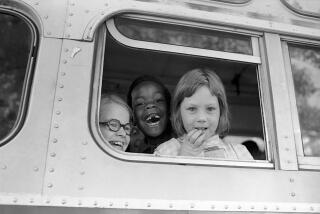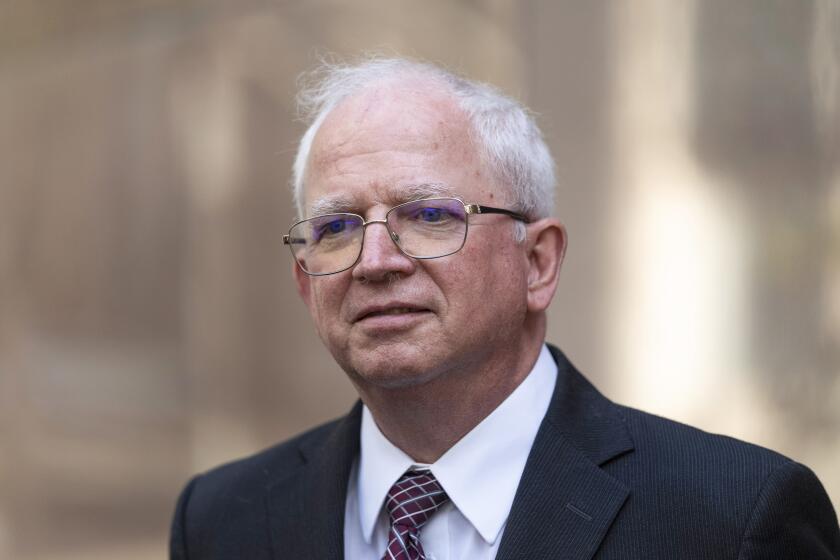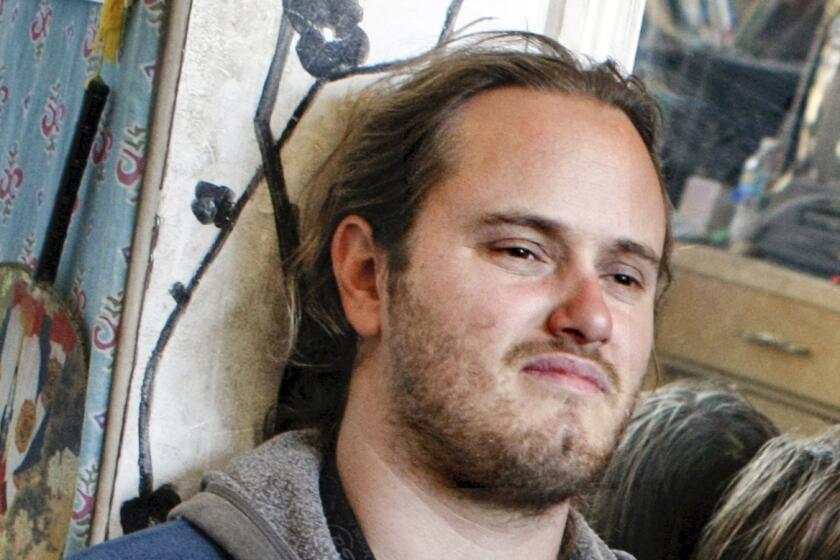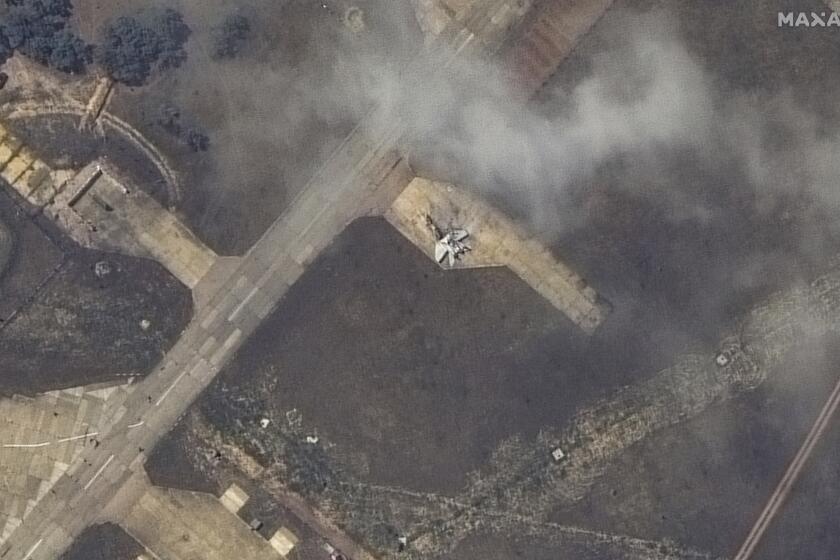Scholar Maps World of N.Y. Detectives
Retired Det. Bobby Small was recounting the case of The Victim With the Hole in His Head -- the top of his head.
“That was very unusual,” Small said, pointing to the center of his own skull. “So we had to figure out what happened.”
Over drinks in Coogan’s, he was recalling the first time his crew from the 34th Precinct took sociologist Robert Jackall to a murder scene in 1992.
“Hey, Bob!” Small shouted. “Your first homicide, how did you feel seeing the body?”
“Oh, it didn’t bother me at all,” said the 65-year-old Jackall. “That was a great homicide.”
Then he recited the date, the location of the apartment and the name of the perp.
“Oh, God,” said Small, though no one really was surprised by the memory of the guest of honor at the reunion held last week at the popular watering hole at Broadway and 169th Street at the upper end of Manhattan.
Former detectives from the New York Police Department’s Midtown North Precinct, the transit police and the nearby 34th -- the “Three-Four” -- toasted the mild-mannered scholar who shadowed them from 1991 to 1993 when the crack epidemic was fueling a shocking number of robberies and murders. The occasion: publication of Jackall’s second book on their exploits, “Street Stories: The World of Police Detectives.”
As is his previous “Wild Cowboys: Urban Marauders and the Forces of Order,” it’s filled with case studies exalting the perseverance of detectives caught between the inanity of the police bureaucracy and the stupidity of the crooks, who invariably turn on each other and confess.
Jackall and Small recalled how police higher-ups had suggested a quick solution to the case of the 17-year-old shot in the top of his head. His body was found near the bottom of a fire escape; another body was found inside a third-floor apartment, this one shot in the stomach.
“The bosses,” Small noted, said they’d “bet any amount of money” that the teen found near the bottom of a fire escape had shot the guy in the apartment, then fled out the window, and that the victim had managed to crawl to the window and shoot down -- producing the unusual wound. “Two clearances -- and case closed!” Jackall laughed.
“I went to [Small] and I said, ‘Bobby, What do you think?’ He said, ‘This is Fiction 101.’ ”
In fact, the detectives determined, the teenager had been part of a group from Connecticut that had come to the city to buy crack, then they “tried to rip off the drug apartment” and wound up shooting the Dominican dealer inside -- but it was the dealer’s compatriots who shot at the would-be thieves as they fled, hitting the 17-year-old.
In Connecticut, the detectives discovered another twist about the guy who shot the dealer. “The perp’s mother was a corrections officer,” Small said.
“She probably does the cooking in prison for family reunions,” said Jackall. “Good case.”
Another former detective, Garry Dugan, said that in 1965 there was one homicide in the sprawling 34th Precinct, whose station is at Broadway and West 183rd Street, not far from Coogan’s. But by 1991, there were 122 in Washington Heights, the center of New York’s Dominican community and the site then of booming drug markets.
“Now it’s broken up into the 33rd and 34th [precincts],” Jackall said. “There was too much murder in the old Three-Four, so they divided it.”
Back then, Dugan investigated 47 gang killings that became the basis for Jackall’s “Wild Cowboys” book, but it had the misfortune of coming to trial -- from a publicity standpoint -- “at the same time as O.J. Simpson,” Dugan said.
Peter Walsh, co-owner of the restaurant, came over to greet the officers, some of whom were immortalized on murals on the establishment’s walls. The paintings are by Puerto Rican artist Sam Garcia, who used the faces of police regulars in scenes of medieval knights.
“Timmy Muldoon, there,” said Walsh, nodding. “We made him a monk opening a beer.”
Walsh calls his place “an Irish bar in a Dominican neighborhood next to Harlem” and takes pride in how the different ethnic groups mix there now, along with doctors from Columbia Presbyterian hospital. But when Jackall was running with the detectives, “It was just insane,” he said. “It was, ‘Is society going to win or lose?’ ”
There were riots in 1992 after an undercover officer killed Jose “Kiko” Garcia, who some locals insisted was an innocent victim, though videotape showed him to be a drug dealer. At the same time, hundreds of homeless men were being housed at the armory on 168th Street. Walsh recalled chasing a purse thief inside and then having to quickly retreat. “They’d have fires going on, smoke in the place, all these guys getting up from their beds.... It was like the apocalypse,” he said.
Dugan said he and other cops would go to the armory to get fill-ins for their lineups, offering men $5 to pose as suspects. “Some guys would have big beards. ‘Take me!’ ‘No, we can’t, you’ve got a beard.’ They’d shave their whole beard off for five bucks,” the detective said.
Some of those lost souls would turn up dead on the street outside, Coogan’s co-owner said -- and no one wanted bodies found in front of their business.
“The pizza guy [next door] would move them in front of us, six in the morning,” Walsh said. “I’d move them back. In the end, the pizza guy and I would carry them across the street.”
The good news? “Those things don’t happen anymore,” Walsh said. The apartments across the street go for $350,000 now and the armory was converted by Dr. Norb Sander, an internist and a former New York City Marathon winner, into one of the finest indoor tracks anywhere, on the theory that “if kids could run, they’d do better in school.”
Jackall’s field work with the police officers was funded by the National Endowment for the Humanities and a Guggenheim grant. As Walsh sees it, the scholar gained the cops’ trust in part because he never tried to compete with the alpha males in the detective ranks.
Jackall trained to become a Jesuit priest and taught Latin before turning to sociology in the 1960s. And while he’d hang with the police after hours at Coogan’s, he mostly held his wine glass and “didn’t try to knock down with the cops,” Walsh said. “No one drank with these guys, I’ll tell you.”
At the party, George Delgrosso was recalling how he had to wait a year as a detective for his first homicide case. “That I found out later was a thing that detectives in the squad had,” he said. “They wanted to control the overtime, the old-timers. ‘Oh, you can’t catch a homicide -- you don’t have the experience.’ Because that’s where you made the overtime. My year was up that morning, New Year’s Day.”
That’s when he was assigned to investigate the case of a French tourist who had been mugged and struck his head on the pavement while in Times Square for New Year’s Eve.
Of course, “they gave me a loser,” Delgrosso joked. “There was no report made out, the body was still at the hospital, there were no witnesses at the scene, no crime scene, nothing.”
But he got a break when other officers, investigating a robbery in Times Square, questioned a Brooklyn man: He’d run into a fellow named “Smokey” who said he had “caught a body when the ball fell.”
Eric Smokes and another man eventually were convicted of robbery and murder, but Jackall’s chapter on the case, “When the Ball Fell,” does report one small positive outcome from that crime: Smokes got his college degree in behavioral science while in Sing Sing.
The detectives at the party have gone on to other things -- many now could pass for investment bankers in their blue and gray suits. Delgrosso just finished a stint as an investigator for the Sept. 11 commission. Dugan investigates fraud for insurance companies. And Small conducts investigations for New York City’s schools.
“Easy stuff,” he said. “Corporal punishment. Your son comes home and says the teacher called him a [name and] hit him. We go and talk to the kid, the teachers.”
Jackall lifted his glass. “I want to thank everybody,” he said, “for the opportunity to enter your world.”
But Jackall apparently forgot one lesson.
“God, I had a hangover afterward,” he said the next morning. “I drank too much wine. That’s a losing battle. I should have learned that years ago.”
More to Read
Start your day right
Sign up for Essential California for news, features and recommendations from the L.A. Times and beyond in your inbox six days a week.
You may occasionally receive promotional content from the Los Angeles Times.






